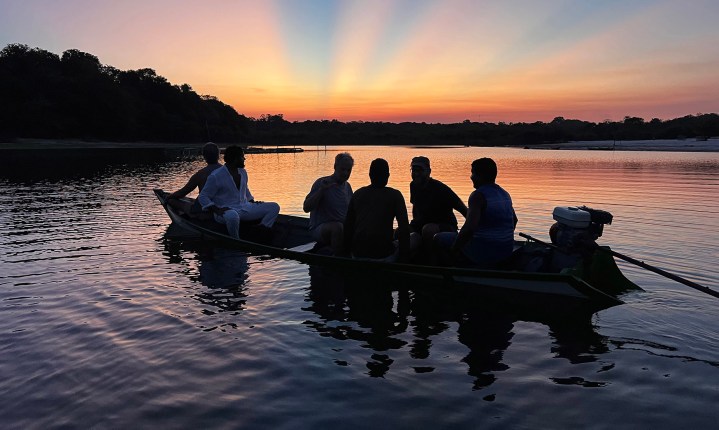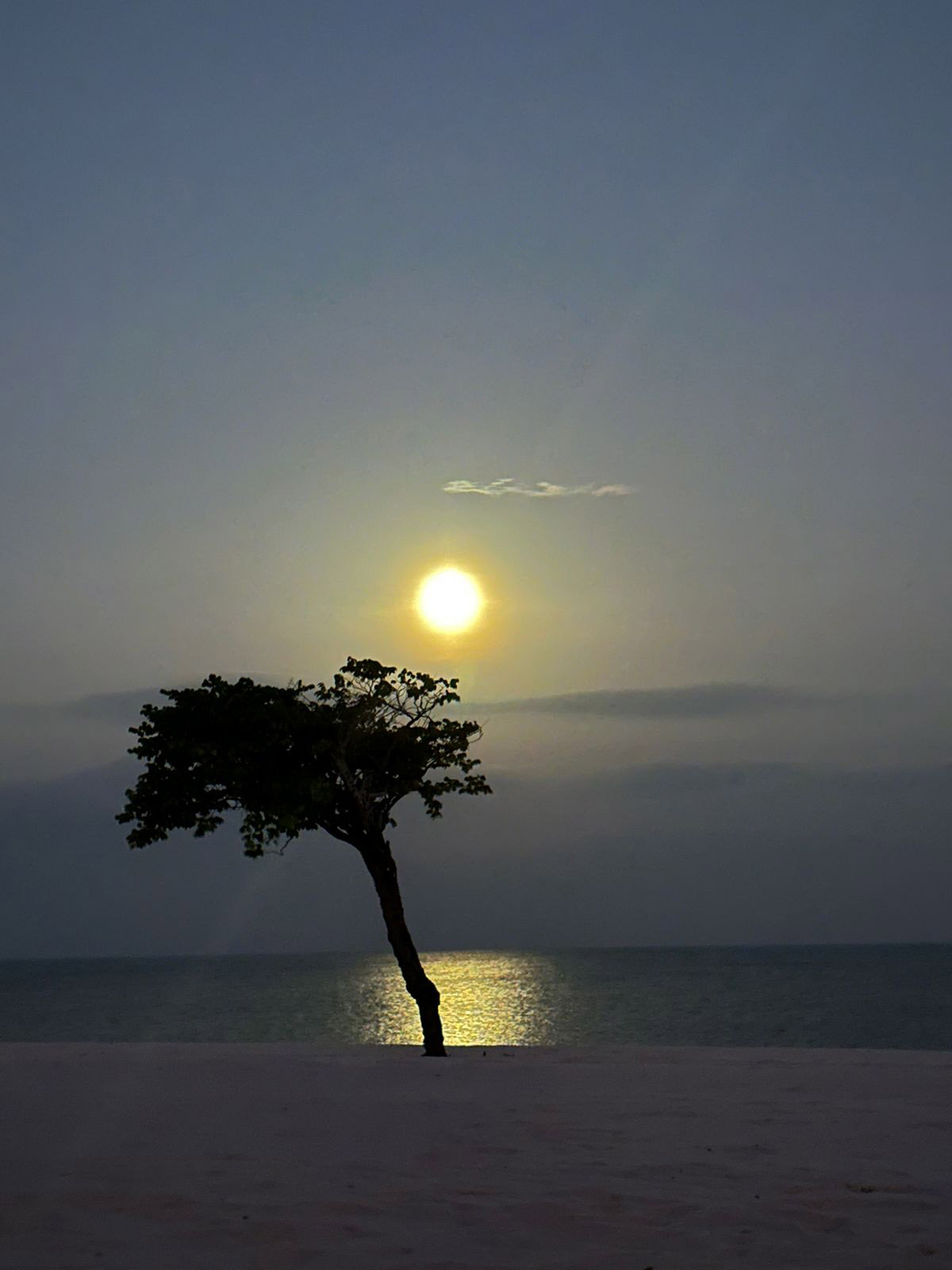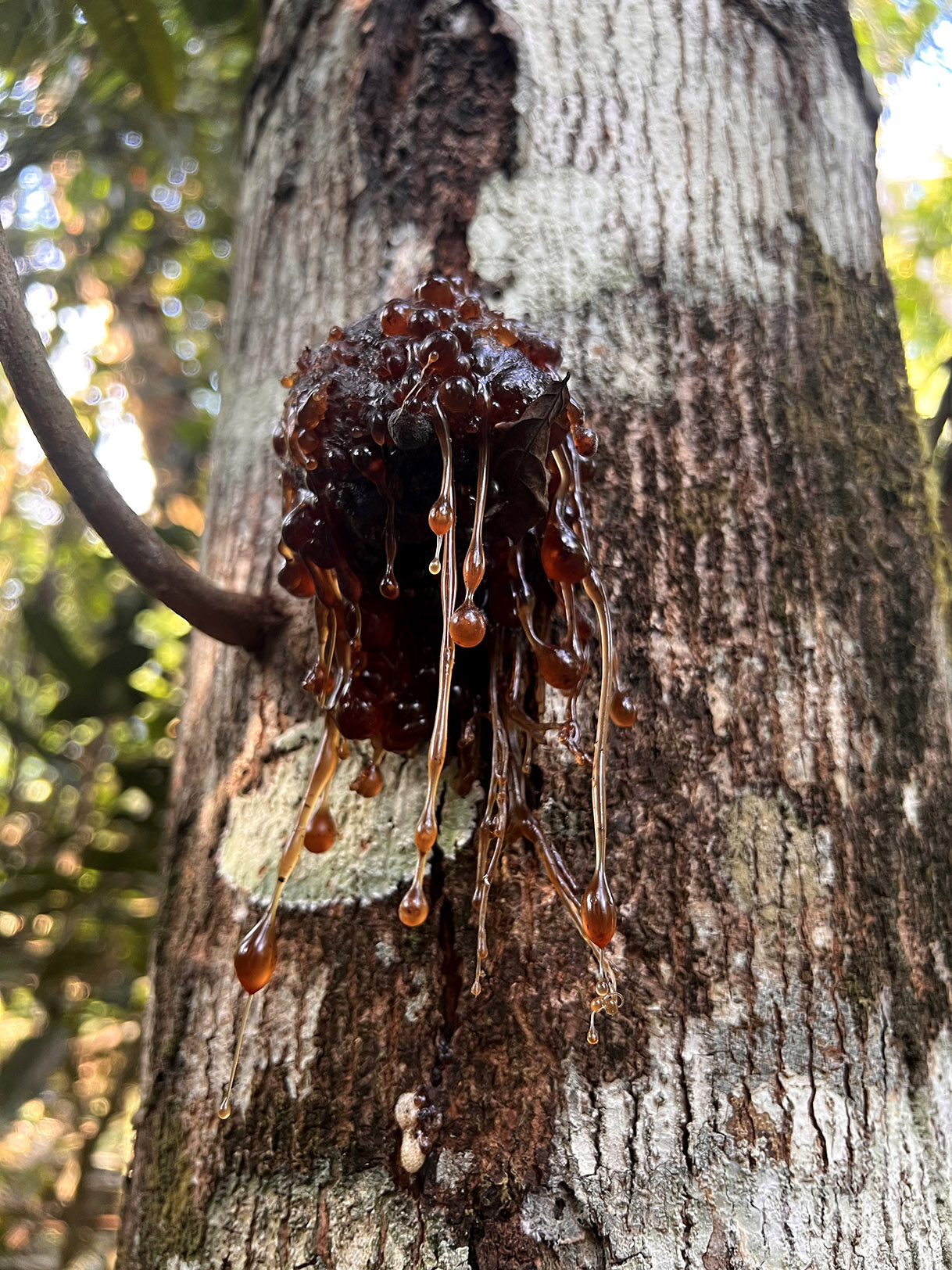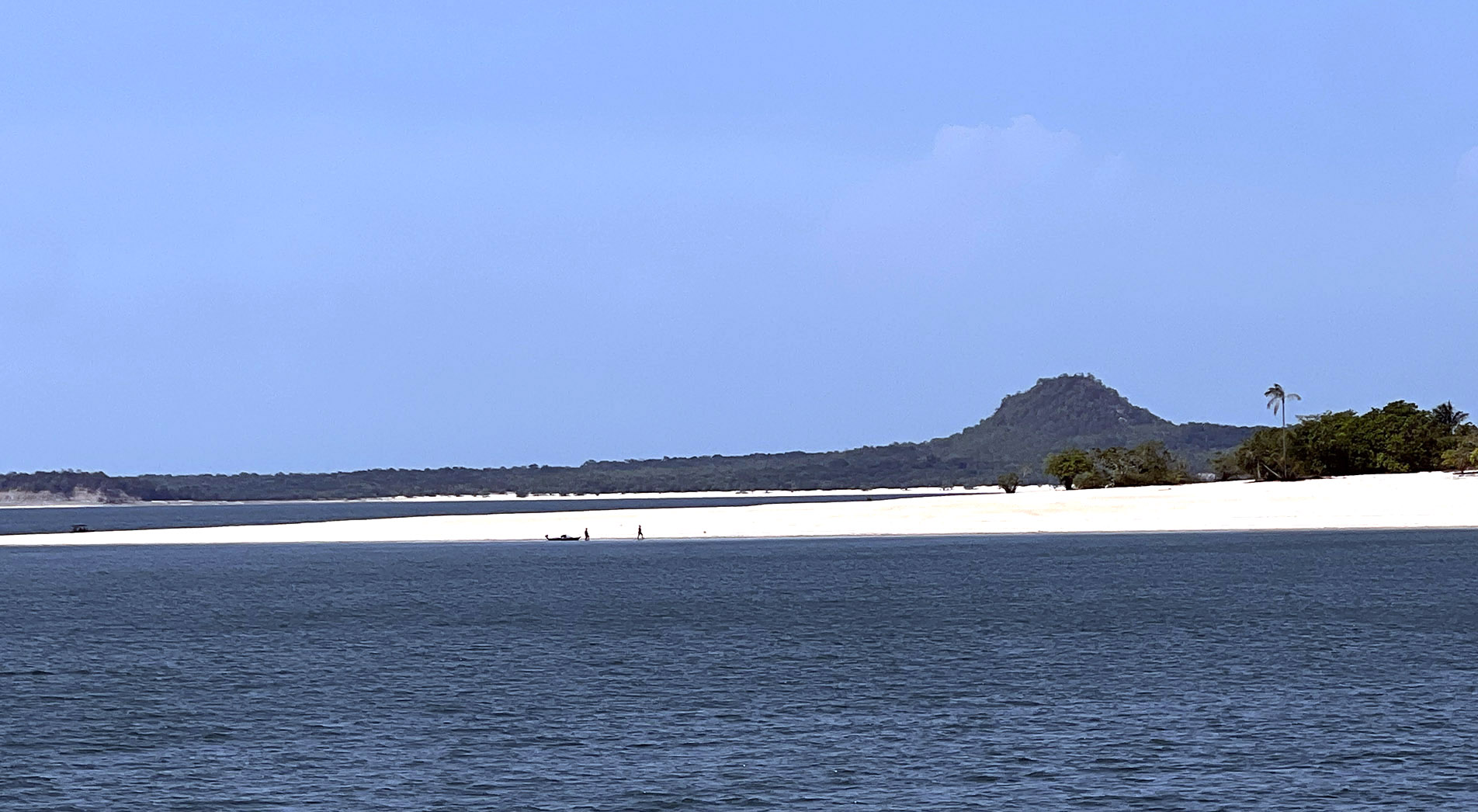ECOCIDE OP-ED
Clarion call for the Amazon – its destruction concerns us all, and we ignore it at our peril

The ecological predicament in the Amazon is reaching a tipping point. Even under Lula’s government, with a drop of 40% in deforestation since the environmentally calamitous Bolsonaro regime, the Amazon is being pushed to her limits. The combination of old-growth timber extraction, clear-cutting for cattle farming or soya plantations, or slashing and burning the forest to make way for mining deposits of precious minerals, that biome now sits on a dangerous precipice. Under threat is the Amazon’s capacity to provide the vast and essential set of ecosystem services it so abundantly gives to a planet in crisis. Guy Lieberman went to learn more from those on the ground pushing back against the ecocide.
I thought that I knew a few things about the Amazon, going in. A rainforest in an equatorial region that has a big river running through it. Many species, vastly biodiverse, a naturally occurring ecosystem at the heart of our beautiful planet. Ancient tribal shamanic communities, some still hidden from the world. The lungs of our Earth. A football field a minute being destroyed by deliberate fire or clear-cutting. All the tropes I had myself repeated to others.
How unprepared I was for the reality. How little I understood about the Amazon’s origination, its formation, its precariousness. I’m now fresh on the other side of a deep and staggering induction into the story of that majestic river system and rainforest.
A few months ago I was invited to join a delegation, most of them from Latin or South America, to spend eight days aboard a boat to learn about the region. This was not an ecotourism adventure. We were to come with an open mind to discover the waters and the jungle, to meet indigenous communities of the Brazilian rainforest and to be educated, as a matter of urgency, on the historic, current and – if we continue on this trajectory – future realities of the Amazon. We were to further discover and grasp that the state of our planetary ecosystem is held in the balance by what happens in the Amazon.
I was struck by several concurrent and intersecting facts. First, the raw expanse of the waterways. To my mind, this was less of a river and more of a series of inland seas where, at any given moment and in several directions, the waters meet the horizon. I’d never seen anything like it. The amount of freshwater that the Amazon provides the world is 10 times the accumulation of the next 10-biggest rivers. That’s 10 times the combined amount of those 10 rivers, among them the Yangtze, Nile, Congo, Mississippi, the Mekong and Niger. Take a moment to let that sink in.
There is nothing like the Amazon anywhere else in the world.
The beaches, vast and white with powdered sands, were paradise-like, endless and, weirdly, for me, empty. Where were the hotels, the resorts? Day after day of cruising these oceanic riverways, jumping in and out of these clean, sweet waters, I could not grasp why, in a country of more than 200 million people, this place was not overrun with leisure seekers. Where was everyone?
The rainforest rippled out in a tableau of fading green and blue layers, sometimes building upwards into low-lying mountains. The beauty of it all was stunning, breathtaking.
We did a lot of walking. The jungle was just what you would imagine, with the great canopy and bird life and monkeys and insects with all their requisite squawks, chirrups and song. Except when it was explained to us by the patient guides from those ancient forest tribes, that what we might expect to be a rich and loamy soil beneath all this was in fact beach sand. A desert, essentially.
Huh?
Dig down a few centimetres with your toe, and there was the proof. Dry sand. The forest, this fecund and abundant cornucopia, was literally surviving off the shallow detritus of a carpet of leaves covering the forest floor. The roots of even the most towering of trees splayed outwards, our guides told us, acting more like mycelium than the classic deep roots we have come to expect in such an environment.
The land that remains once the clear-cutters or pyromaniacs have done their work… is replaced by such stupidity as cattle farming or – possibly worse – monocrop soya plantations, extended to the horizon.
And here, unbelievably, the reality lands: this forest was the result of thousands upon thousands of years of human habitation. There are no rocks in the Amazon. No great structural edifices of ancient times exist, no per-the-usual historical record of human activity. None, that is, but the rainforest itself. Millennia of faeces and planting and nourishing and nurturing of life. The human edifice IS the forest.

Criminal slash and burn of rainforest, as witnessed across the entire region. It is close to impossible to regenerate this ancient and delicate biome, so this damage runs deep. (Photo: Guy Lieberman)
The Amazon basin, as we’ve all heard, regulates the planet’s rainfall, temperatures, and an inordinate quota of oxygen pumped into the atmosphere, unknowingly and somewhat blissfully consumed by us all. It is also the primary land-based carbon sink on Earth. This, created by a quadrillion little poops made by thousands of generations of jungle-dwelling clans.
And then, the crisis.
For centuries the Amazon has been ground zero for some of the darkest, most cruel acts that humans have laid down upon other humans. A coordinated and sustained campaign of pillaging, burning, destruction, an equally distributed and unabated chopping down of people, trees and forest creatures.
Read more in Daily Maverick: Africa should consider criminalising ecocide at continental and regional levels
A barrage of rolling genocides of the native communities and this rare and delicate ecosystem. For hundreds of years it has been the focal point of a swathe of extractive industries, and to this day Brazil continues to slice through the forest, right down to the nub. The land that remains once the clear-cutters or pyromaniacs have done their work, that thin crust of otherwise nutrient-less sand, is replaced by such stupidity as cattle farming or – possibly worse – monocrop soya plantations, extended to the horizon. Much of the beef you consume might well come from the deforested Amazon, something any meat eater can, and should, check closely.
The whole cycle is a cul-de-sac of short-sightedness and a celebration of profiteering with zero forethought.
Because the land can’t sustain more than one or two cycles of these foolish attempts at farming, billions of dollars of chemicals are added as an insult to the injury. This cocktail filters into the waters and does its deadening work against myriad microbial communities that form the bedrock of this rare biome.
And where does the majority of the Amazon’s soya end up? As pig feed in China. We would see these heavily laden, mile-long ships inching along the waterways, like poisoned darts moving in slow motion, their damage already done. The whole cycle is a cul-de-sac of short-sightedness and a celebration of profiteering with zero forethought.

On the move along the Amazon, the support boat housing the formidable leadership team managing the gathering. (Photo: Guy Lieberman)
Spreading toxicity
In addition to monoculture, illegal mining is rife. Because this is mixed up with criminal syndicates, and because Brazil suffered four hard years under the morally corrupt and visionless Jair Bolsonaro, the toxicity is not just what is happening to the forest on a botanical or chemical level. Just recently one of these mining militias went into a part of the forest and slaughtered a host of indigenous people who were resisting their extractive work. We’re not talking about acts of 16th-century Portuguese prospectors. This is yesterday. This is now.
The delegation aboard our vessel, the graceful Amazon Dolphin, owned and operated by a company called Kaiara, were a hand-picked group of leading entrepreneurs, academics and activists. I was an anomaly among them, the only Israel-based South African, and one of a handful of non-Portuguese or Spanish speakers.
We were called on to come forward with a set of collaborative, proactive ideas to address the spectacle of challenges the Amazon faces. More than that, we were asked to go beyond just generating ideas, but to take the best of these and convert them into a series of interlocking commitments, ones that we were asked to hold by and pursue with all of our hearts, minds and resources. Rarely have I found myself at the seam of such a set of dire facts on the one hand, and such pragmatic optimism on the other.
Read more in Daily Maverick: Tropical forest losses rise in 2022 despite pledge to end them
What is happening in the Amazon concerns us all, but above and beyond that – and here I hope to avoid sounding cliché – it concerns our children. If we don’t recommit our resources to preserving what remains of the Amazon, and attempting to regenerate that which has been destroyed, then we are preparing for ourselves a very shallow grave in the baking sands of what will, in the end, be a climate-compromised Earth.
It’s time to focus our combined energies on the Amazon jungle and those vast, sweet waters, and that great, generous and miraculous rainforest. Too much is at stake to ignore the reality. If we continue to walk this road, we do so at our peril.
To understand more about what you can do to help, contact me via the link below. DM




























Comments - Please login in order to comment.